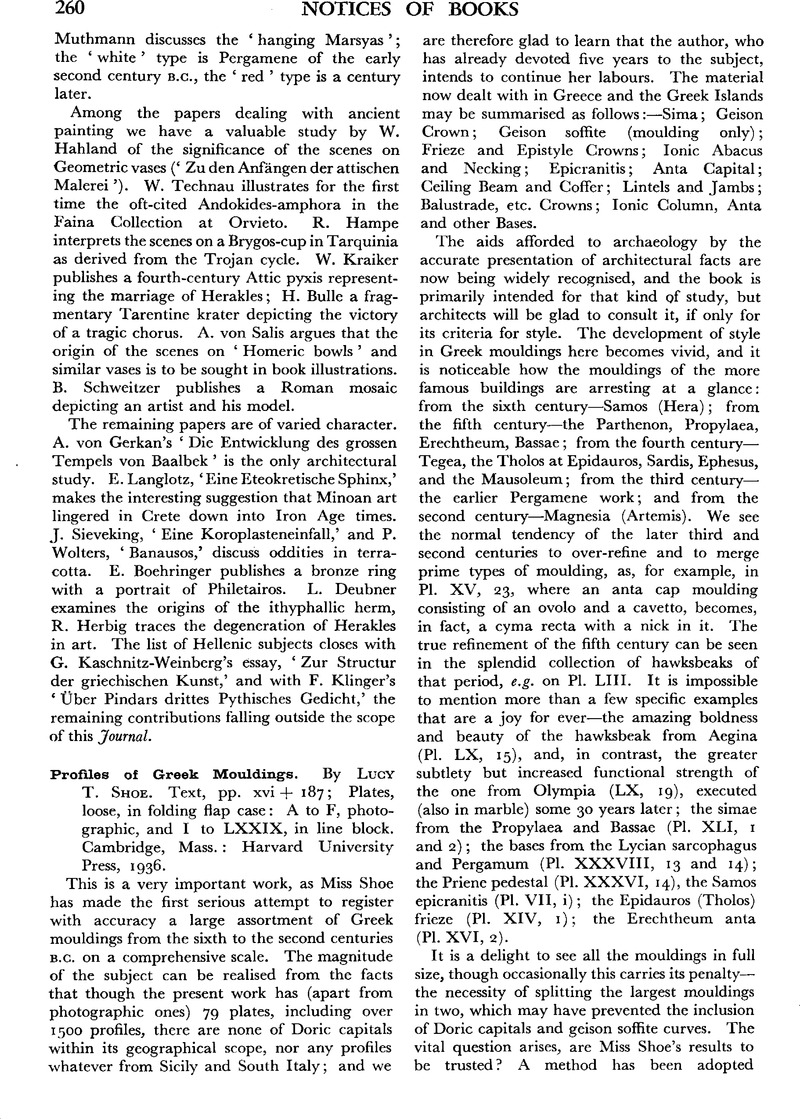No CrossRef data available.
Article contents
Profiles of Greek Mouldings. By Lucy T. Shoe. Text, pp. xvi + 187; Plates, loose, in folding flap case: A to F, photographic, and I to LXXIX, in line block. Cambridge, Mass.: Harvard University Press, 1936.
Published online by Cambridge University Press: 23 December 2013
Abstract

- Type
- Notices of Books
- Information
- Copyright
- Copyright © The Society for the Promotion of Hellenic Studies 1937
References
1 The museum fragment may be unfinished, but there is a completed one lying about outside; cf. also, Dugas. There is no indication in text or plate that the torus is carved with a guilloche.
2 See Evans, , Palace of Minos; (outstandingly Vol. II, Part II, Supplementary Plate XXII)Google Scholar. Further material has come to light since this was published.
3 There is repetition here, and also confusion. The so-called frieze crowns (really cornice bed-moulds) of the Parthenon and Propylaea are dealt with both on pp. 50 and 57; on p. 169 the true frieze crowns are dealt with, but why is one from the Propylaea on Pl. XXIII, and another from that building and also the Parthenon example on Pl. LXXI?




